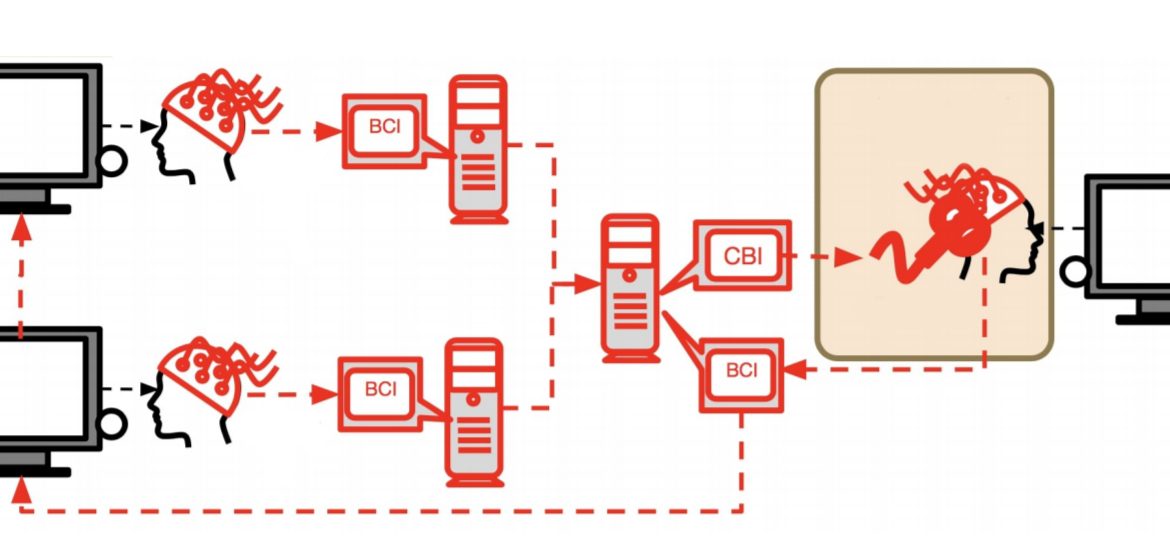
New Advances in Telepathy
Is it possible to communicate without using words? Without talking, writing, without eye contact or touching… just directly passing thoughts, exchanging ideas or sharing emotions with someone? Or even, controlling the bodily movements of other creatures? Doing this from thousands of miles away?
These are some of the issues that have long occupied researchers from several disciplines including technology, neurology, and even linguistics. It is not just a simple question of “how?” as it also carries various ethical aspects within. Can two or more brains directly communicate, regardless of any obstacles in between? If this was possible, how would the communication methods between people change? How ethical is it to directly access others’ minds? How realistic is the probability of abusing such a technology? These questions have possessed the minds of not only scientists but perhaps everyone throughout history.
Accordingly and apparently, new questions arise: Can a super-intelligent “organic computer” be created by uniting many people’s brains on a network?
Miguel Nicolelis is an expert on brain-machine interfaces, and he sees the unification of brain activities as an inevitable development of humanity, or as the next step in our evolution. He already carried out studies where he tethered together the brains of several mice, just like microprocessors, by using electrode implants. Animals “connected” this way always exhibited superior results than individual mice when tested for their ability to distinguish between different electrical stimuli. So, if mice sharing an interconnected brain network become smarter than they individually are, what can we expect when humans are connected together this way? Would our organized working skills improve? Would language barriers disappear in communication?
Thanks to a new interface called BrainNet, scientists aim to read the brain activities of one person and transfer this data to another person’s brain, thereby eliminating the distance between them, bypassing the existing paths of communication. In experiments, they used two people almost 8,000 km away from each other; one in France and the other in India.
They claim that the interface of BrainNet is the first non-invasive example of direct communication between the brains, without any physical intervention (or implant) to the body or the brain, by only using EEG to record brain signals, and TMS (Transcranial Magnetic Stimulation) technologies to transfer these signals to another brain. Although the underlying technology is complex, the process is simple enough: sending messages like “hello” and “goodbye” to each other, without using text, voice or body language – and the average success rate was 90%.
In another BrainNet study, three subjects were connected in a game of Tetris, where two were designated as “senders” and one as “the receiver”. The senders communicated their decision to rotate the shapes (or not) to the “receiver” through the same way explained above, and the receiver decides to rotate the object or not according to the information he received, without seeing the game screen. In the performance evaluation, the average correct movement success was over 80%.
This interface is, of course, very new and is yet able to perform simple “yes or no” operations. In theory, an unlimited number of people can connect together. Scientists say that linking the brains of many people this way, in the future, may possibly serve the purpose of creating “social networks” to solve very complex problems with a joint mind-power, or for communicating with people who are unable to speak because of an illness or an accident.
Using EEG for knowledge transfer is not a novel idea; successful results were obtained in wheelchairs for the disabled. In another study carried out in 2008, an EEG-controlled robot was allowed to move around the room to pick up and drop various objects. Other trials focused on people’s ability to control animals.
While it is not possible to predict exactly where all these studies will end up, they will certainly open the door to an enormous amount of innovations and possibilities. Besides technological convenience, scientists are particularly excited about possibilities in learning processes. However, issues including private life and individuality become more of a concern while technology advances so fast. Will the individuality of humans be threatened by the “unifying” property of such a technology? How will the social structures of societies change when technologies and practices that have the power to violate people’s personal rights become a part of our daily lives?
Although we have no choice but to wait and witness all this, we are glad that there is no technology that prevents us from dreaming, yet.
REFERENCES
- 1. https://www.nature.com/articles/s41598-019-41895-7
- 2. https://www.iflscience.com/brain/direct-brain-brain-communication-used-humans/
- 3. https://www.scientificamerican.com/article/scientists-demonstrate-direct-brain-to-brain-communication-in-humans/
- 4. https://www.smithsonianmag.com/innovation/why-brain-brain-communication-no-longer-unthinkable-180954948/
- 5. https://www.sciencedaily.com/releases/2014/09/140903105646.htm
